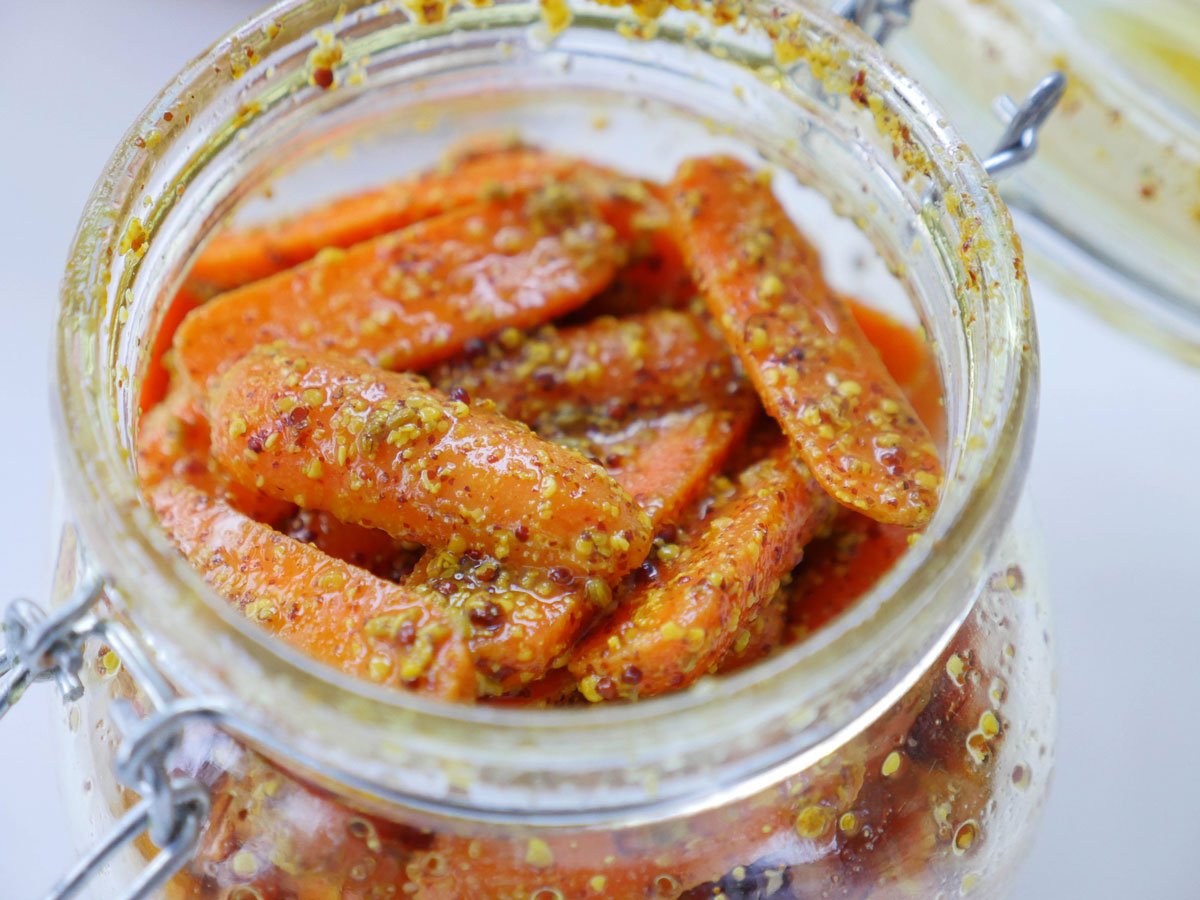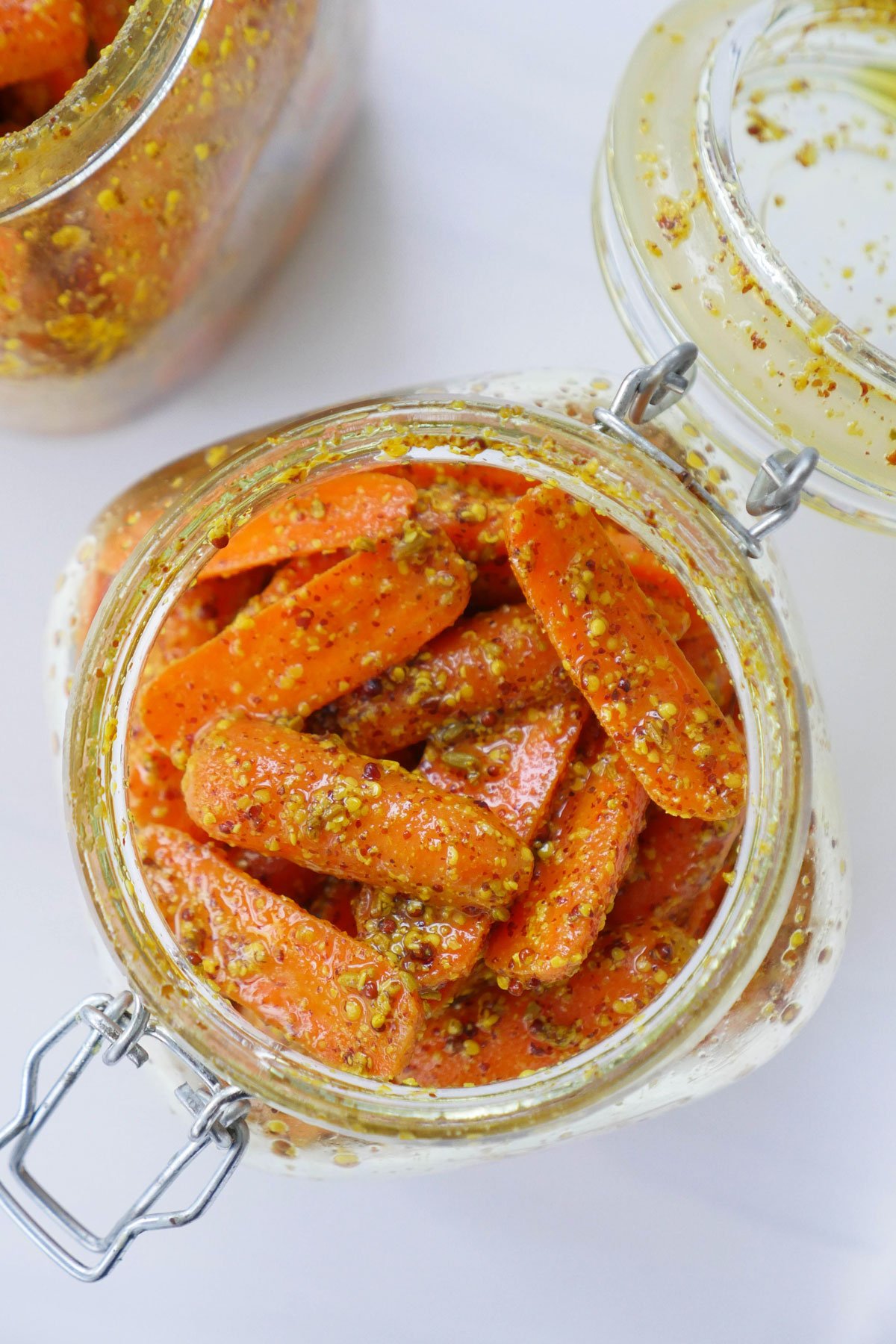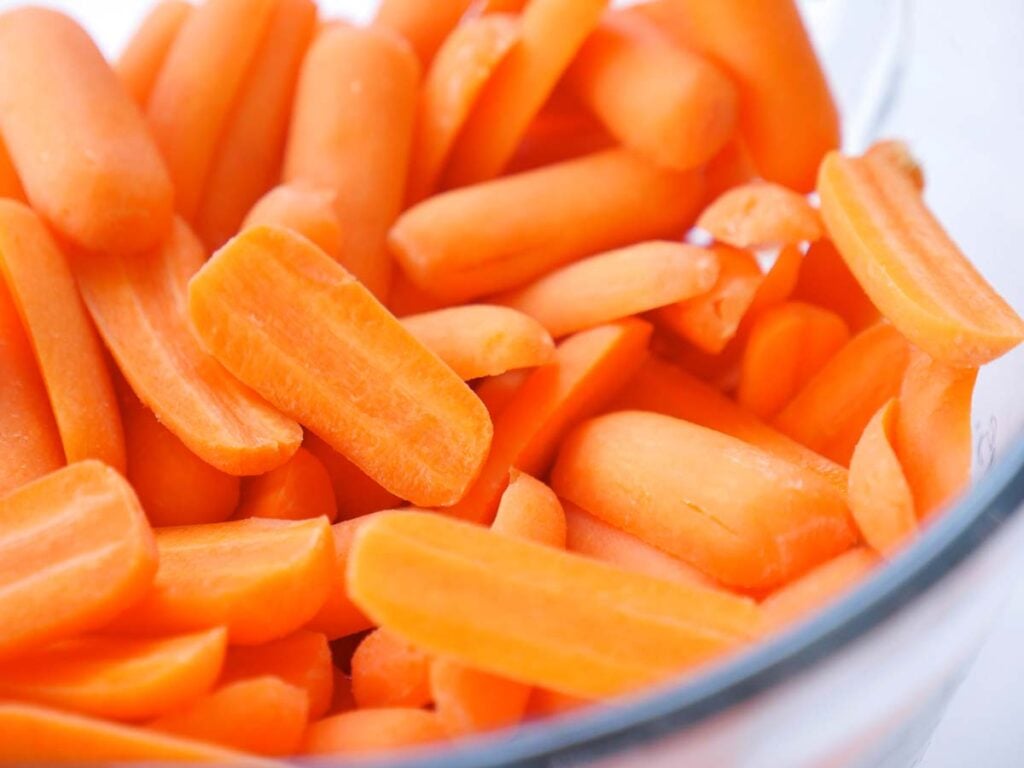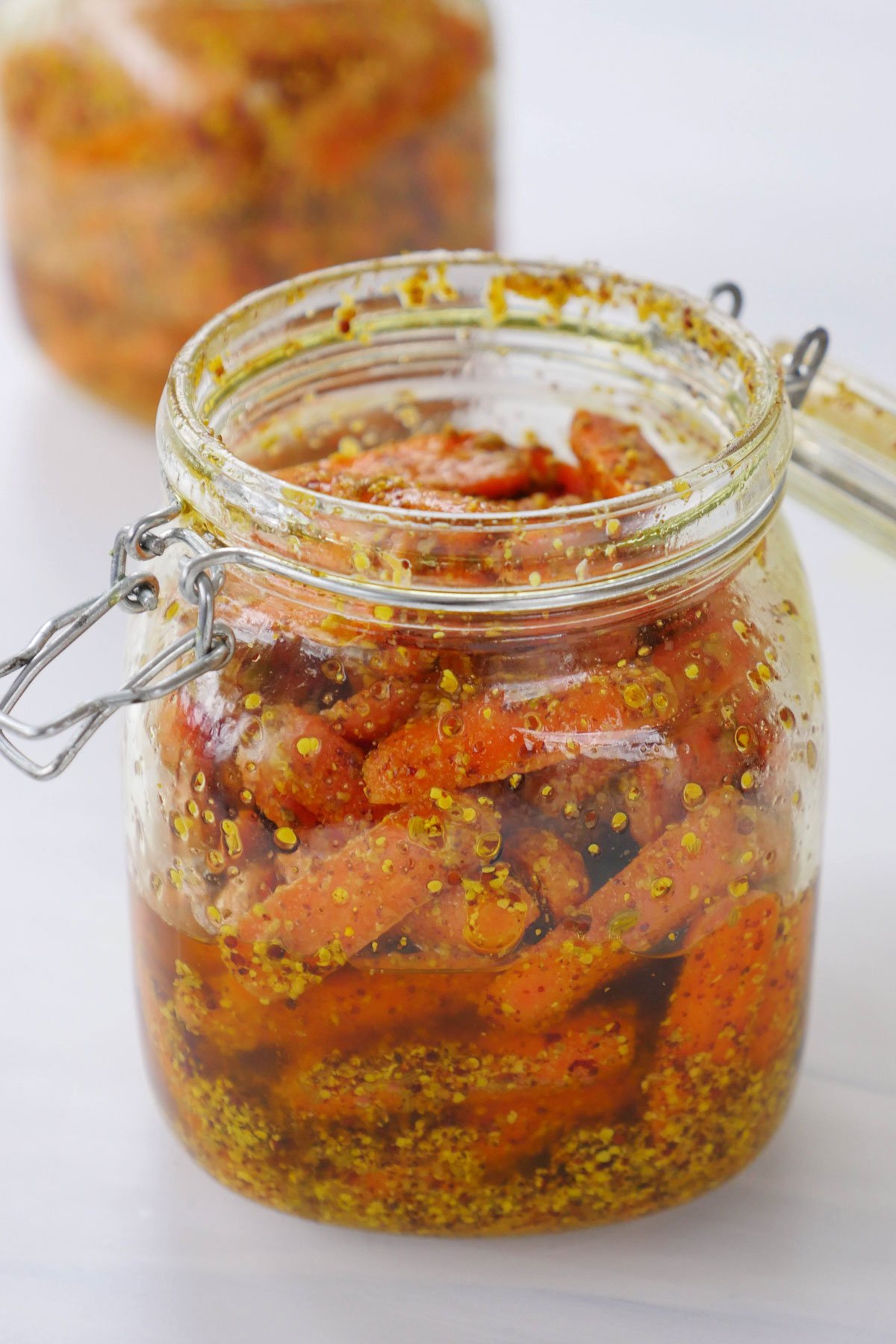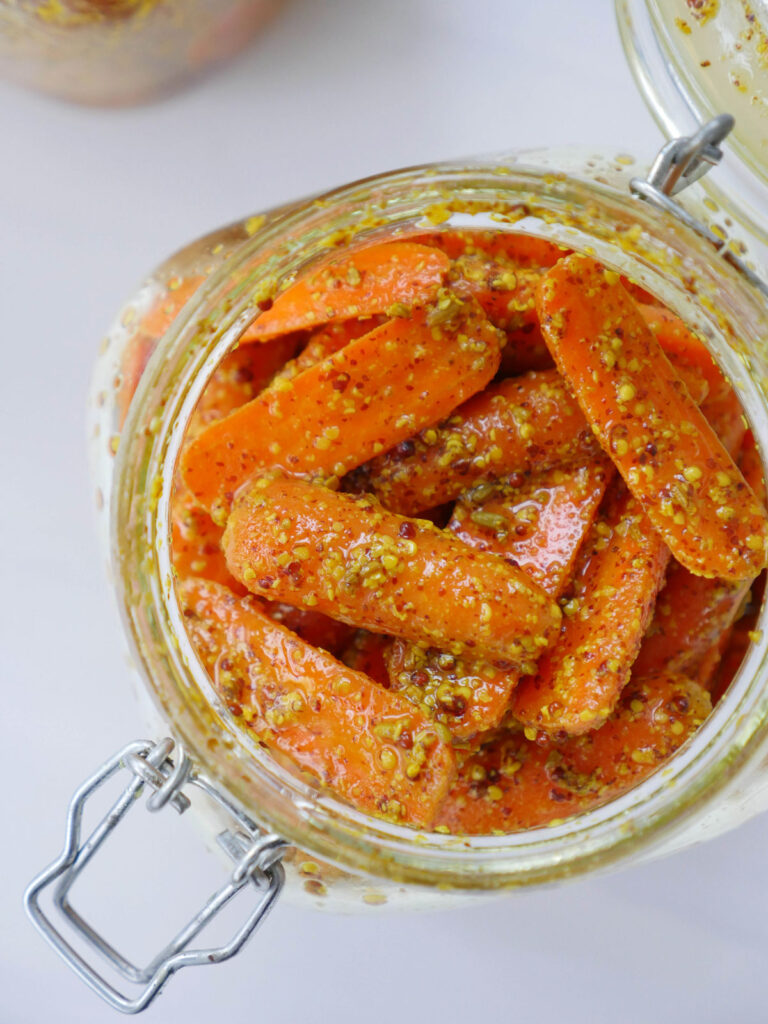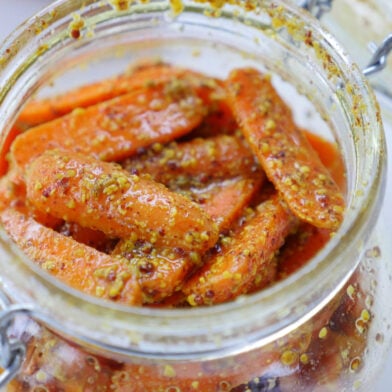What is Achar?
When you eat an Indian meal, it’s common to serve pickles, also known as achar, alongside the meal. It’s eaten as a condiment, but sometimes, when you have a really good pickle on your plate (like this one), it’ll steal the spotlight. A spoonful of achar adds excitement to even the simplest of meals. Dal and rice are comfort food. But dal, rice, and achar… now, that’s exciting. There are countless varieties of achar; you can use nearly any fruit or vegetable to make it. And all Indian families have their own recipes and variations. There’s no one right way to make or spice a pickle. This particular carrot pickle is a family recipe. It’s slightly spicy but mostly tangy. You can easily increase the heat by adding a few green chilies or cayenne to the recipe if you’d like. I love it just as it is. It’s remarkably flavorful while still being mildly spiced. Some pickles can take days, weeks, or even months to mature. This carrot pickle takes around 5 days for the flavors to develop and intensify. I then move it to the fridge, where it continues to deepen in flavor.
About the ingredients + a note about mustard oil
This carrot pickle is made with very few spices: mustard seeds, fennel seeds, salt, turmeric, and cayenne. It’s also made with mustard oil, but you can use another neutral oil, like avocado oil, if you’d like. Mustard oil adds a spicy, pungent flavor to pickles, making them spicier than they would be if you were to use a different type of oil. If you use a neutral oil, I’d suggest adding a bit more cayenne to increase the spiciness. For those unfamiliar with mustard oil, it has a sharp, wasabi-like flavor and is commonly used in Indian cooking. When you heat the oil, it helps to reduce some of its pungency. One important thing to know is that in the US, mustard oil is sold with a warning that says “for external use only.” Despite this warning, many Indian folks cook with this type of oil. If you’re buying mustard oil from your local Indian store, you can ask the owner/employee there if it’s a brand they suggest cooking with. To learn more about this oil, you can read this article from the NY Times and this one from Serious Eats. If you’re uncomfortable using mustard oil, you can use another type of oil. I’ve made this with avocado oil and it’s still great.
How to make carrot pickles:
First, you have to rinse and dry the carrots – they must be completely dry. I like using baby carrots because they’re easy to cut, but you can use regular carrots if you’d like (see the recipe card below). Then, coarsely grind mustard seeds and fennel seeds. Mix with salt, cayenne, and turmeric then add the spices to the bowl with the carrots. Add mustard oil to a saucepan over medium-high heat and cook for 4-5 minutes, or until you see the oil begin to smoke (you’ll want to turn the stove off as soon as the oil starts to smoke). Wait for the oil to cool down, then pour it in the bowl with the carrots and mix well. Wait another 10 minutes, then stir in some lemon juice. All that’s left is to be patient and wait for 5 days before eating the pickle (note: as an impatient person, it feels strange for me to ask you to be patient. I like to sneak a carrot every day while I wait – it’s fun to see how the flavors change. ). The photo below is what it looks like on the day you first make the pickle and the photo directly below shows what it’ll look like after 5 days. There’s not much of a difference in looks, but there’s a big difference in flavor. In the top photo, the spices are raw, dry—in the bottom photo, they’ve better infused into the oil and the carrots.
How to store these carrot pickles:
I suggest storing these pickles in a clean glass jar. My mom says that in India, they’d use a traditional pickle jar called a maratban, made out of ceramic or stone. Now, she uses her old glass salsa jars. Any clean glass jar will do. After you make this carrot pickle, let it rest on the counter for 5 days before you eat it. Shake it once a day so that the oil coats all of the carrots. After that, keep it in the fridge for up to 3 months. You can continue to shake it periodically. When you want to eat the pickle, use a clean and dry spoon to remove the amount you want to eat and place it into a small bowl. Let it come to room temperature, and enjoy. After I finish about half of the carrots, and once all remaining carrots are submerged beneath the oil, I take the jar back out and leave it on the counter while we finish the rest. This achar doesn’t last very long in our house. Let me know what you think of this recipe, and then come back to try my other pickles!
Looking for more achar recipes? Try these!
Like this recipe? Pin it to your favorite Pinterest board now so you will remember to make it later!
